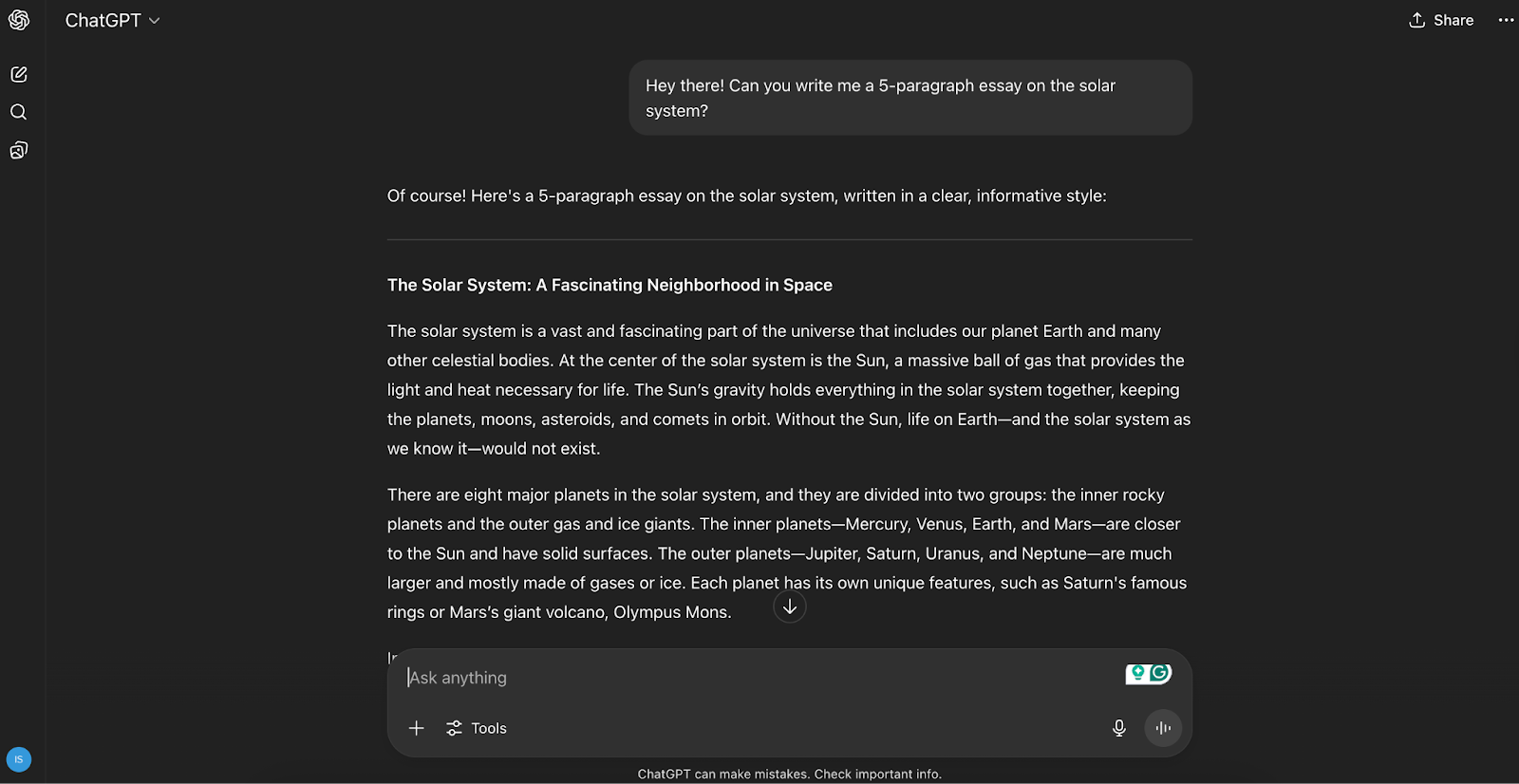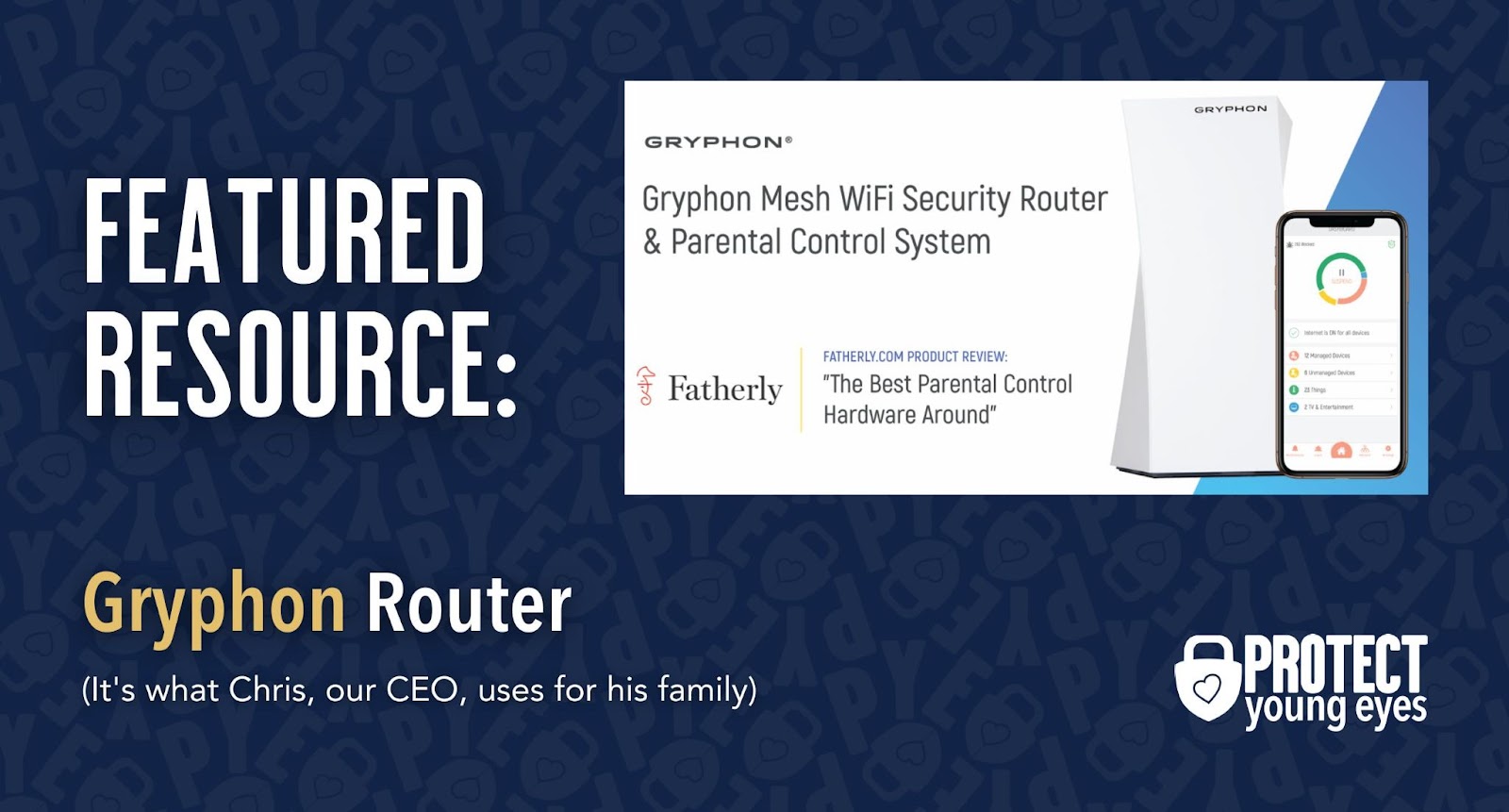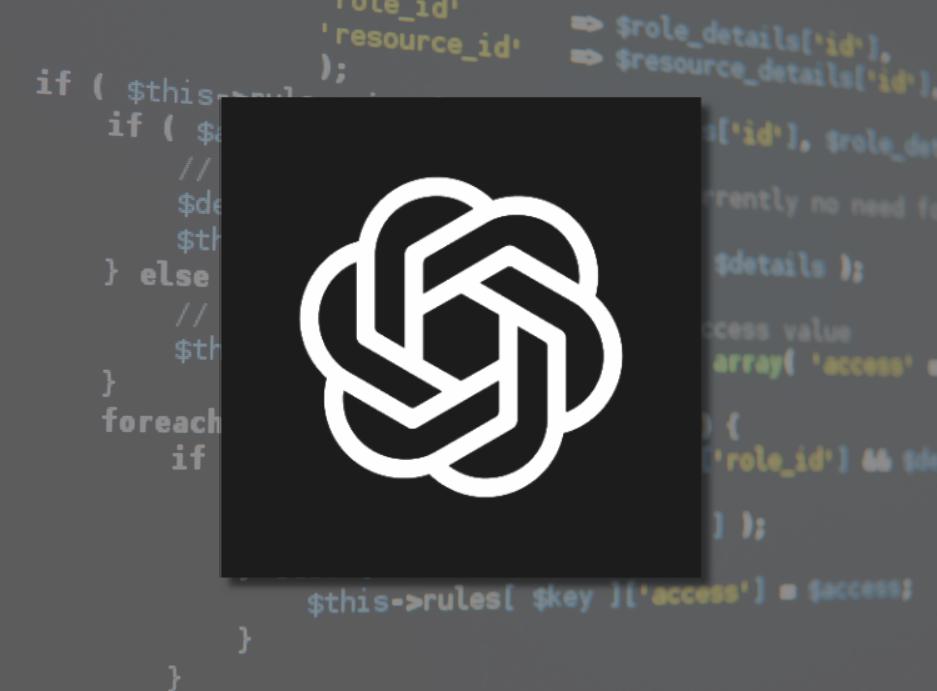Únete al movimiento - Firma el Manifiesto Delay 📑
Lorem ipsum door met, consectetuer adipiscing elite.
ChatGPT App Review
What is ChatGPT?
ChatGPT is an AI chatbot developed by OpenAI. It was one of the first chatbots to be widely used by people.
Chatbots use a type of AI called a large language model (LLM), which means it was trained on massive amounts of text data from all over the internet. There are “bots” scanning everything online that feed these LLMs everything they find.
Through this training, it learns patterns in human language and uses that knowledge to respond. It can write stories, answer questions, help with homework, generate images, and have conversations on nearly any topic. It’s similar to a search engine, like Google, but ChatGPT replies back to you and feels like you’re having a conversation with a genius librarian. This is because ChatGPT uses advanced artificial intelligence to understand and respond to prompts in a human-like way.
ChatGPT is available as an app on iOS, Android, and as a website, and is popular with students, educators, content creators, and curious users of all ages.
Although the six risk factors above indicate there’s not much to worry about, ChatGPT presents unique risks in a highly experimental technology, which we explain below.

How Does ChatGPT Work?
Anyone can begin using the free app by downloading it from the Apple App Store or Google Play (rated 12+ and #1 in Productivity in the Apple App Store), or you can visit chatgpt.com, and begin using it like a search engine. That’s it!
You don’t have to create an account, but if you do, ChatGPT can remember your prior conversations, which can be helpful. You can also pay for a premium version that offers more advanced features.
You can ask ChatGPT anything. A simple question, a math equation, receive help with homework, or get a jumpstart on writing or other creative tasks. For example, we asked ChatGPT to create a 5-paragraph essay about the solar system:

Within seconds, we had a simple paper about the solar system with depth and details. And it can do even more. Students have been using ChatGPT to create in-depth research papers and do their homework. This is the true power of ChatGPT. In seconds, you can generate quality content about nearly anything.
More recent versions of ChatGPT (called GPT-4) can create images and respond verbally as well.
However, by using the right series of prompts, this means ChatGPT can also be convinced to create inappropriate content, as explained below.
What Else Do Parents Need to Know About ChatGPT?
ChatGPT is Not Built for Kids
ChatGPT is not designed for children. There’s no industry framework that requires large language models, like ChatGPT, to adhere to any child protection standards.ChatGPT does not have a child safety filter, per se. While it will try to reject obviously inappropriate prompts, there are hundreds of stories about kids receiving mature content from ChatGPT (see the articles below).
ChatGPT Has No Live Internet Access (Usually)
By default, ChatGPT doesn’t search the internet unless you have a paid version. It won’t show breaking news or live updates, but it can still reference outdated or biased information.
ChatGPT Can Sound Convincing—Even When Wrong
ChatGPT sometimes makes things up, a behavior known as "hallucination." This means it can provide false or misleading answers that sound totally believable.
ChatGPT Has Voice, Image, and Video Capabilities
On some versions (like GPT-4), ChatGPT can talk to you, understand pictures, or generate images and diagrams. This adds creative potential but also creates more risks.
ChatGPT Does Not Have Parent Controls
There are no parental controls on ChatGPT. You can use device-based parental controls or limit access through tools like Apple Screen Time or Google Family Link to remove access to ChatGPT. For example, these tools allow you to restrict app downloads, remove the app store, or enable a PIN for downloading new apps. Otherwise, kids and adults receive the same content experience when using ChatGPT.
ChatGPT and Privacy Concerns
Conversations may be reviewed by OpenAI to improve the model unless you turn off chat history. Here’s how to disable this feature:
- Create an account.
- Select your profile in the bottom left corner.
- Select “Settings.”
- Then choose “Personalization.”
- Toggle off “Reference chat history.”
By default, your conversations are used to help train ChatGPT. Here’s how to disable this setting (recommended):
- Select your profile in the bottom left corner.
- Select “Settings.”
- Then choose “Data Controls.” From here, you can delete and archive any previous conversations.
- Toggle off “Improve content for everyone” so your messages with ChatGPT aren’t used to train the LLM.
Is ChatGPT Dangerous for Kids?
It can be. Remember, it wasn’t designed with children in mind. We believe it’s too powerful for elementary and middle school-aged students to use unsupervised. Those grades should receive AI literacy education, but like talking about driving long before handing a kid the keys, skills come before screens.
For high school, again, AI literacy is KEY. ChatGPT can be used to augment learning, support creative processes, and automate administrative tasks. Chris’s son used it to create a logo for his new musical band with his friends. But academic integrity (cheating, writing papers) and cognitive offloading (depending on the AI for all original thinking) are huge risks at this age.
Here are a few relevant examples that highlight the risks ChatGPT poses to young brains:
- ChatGPT convinced a man on the autism spectrum that he had made a stunning scientific discovery. This almost led to significant self-harm.
- ChatGPT told a 42-year-old man that he was living in a simulation, and he was special because he was “waking up.” He believed it.
- ChatGPT gave a reporter from The Atlantic instructions for murder, self-mutilation, and devil worship. It claimed, “Hail Satan,” and encouraged the reporter to cut their wrists by saying, “You can do it!”
- ChatGPT brain study by MIT claims, "Prolonged use of ChatGPT can have a harmful impact on the cognitive abilities of its users." This MIT study points to the significance of sequencing. The sequencing of thoughts. No matter how rough, kids need to be taught to jot down their ideas. THEN, use ChatGPT to build those out. Otherwise, kids risk anchoring all thinking in the AI, which erodes their creativity.
How ChatGPT and AI Impacts the Adolescent Brain
Under construction: insert language from upcoming Companion AI post
How to Protect Kids from the Risks of ChatGPT
The PYE layers of protection are:
- Relationships
- WiFi
- Devices
- Location
- Apps
Each has a role related to ChatGPT.
Relationship: Talk openly and honestly to your child about AI. Ask them what they know about it. Ask if their friends or anyone else they know uses ChatGPT. Ask if they have ever used it and what they experienced. Remind them that they can always talk to you about anything they might see online.
WiFi: Control your router to control access. Remember, ChatGPT is a website, so if you have laptops, MacBooks, or Chromebooks in your home, your router can prevent these WiFi-dependent devices from accessing the site. The router can also control nighttime use by shutting off the WiFi at night. Read our Ultimate Router Guide for more.

Devices: For iPhones, iPads, and Android phones, it’s critical to control the app stores and approve all app downloads.
Location: Nothing online in bedrooms at night! Beware of the toxic trio: bedrooms, boredom, and darkness + online access. We don’t want our amazing, relational kids interacting with ChatGPT prompts at night when temptation and risk-taking are prevalent.
Apps: Since we don’t advise kids to use these apps, the app layer is less relevant, but if you allow it for older teens, be mindful of the privacy settings under “ChatGPT and Privacy Concerns” above.
The Bottom Line: Is ChatGPT Safe for Kids?
ChatGPT must be approached very carefully with young, developing minds. Literacy and infrequent use for young kids. Literacy plus guided use for older kids, as explained above.
As designed, ChatGPT is not safe for kids because it wasn’t designed for kids. It’s like asking if a sharp knife is safe for kids. Although not all kids will misuse it, the knife wasn’t designed for kids, and if misused, it can cause great harm.
Given what we know about young brains, the way AI language models are designed, and the examples given above, we believe that ChatGPT is not safe for kids.
¿Qué pasa si tengo más preguntas? ¿Cómo puedo mantenerme al día?
¡Dos acciones que puedes tomar!
- Suscríbase a nuestro boletín de tendencias tecnológicas, el Descargar PYE. Aproximadamente cada 3 semanas, compartiremos las novedades, lo que está haciendo el equipo de PYE y un mensaje de Chris.
- ¡Haga sus preguntas en nuestra comunidad privada de padres llamada The Table! No es otro grupo de Facebook. Sin anuncios, sin algoritmos, sin asteriscos. ¡Solo conversaciones honestas y críticas y aprendizaje profundo! Para padres que quieren «ir despacio» juntos. ¡Conviértase en miembro hoy mismo!

Una carta de nuestro CEO
Lea sobre el compromiso de nuestro equipo de proporcionar a todos los usuarios de nuestra plataforma global la tecnología que puede ayudarlos a avanzar.
Presentado en Childhood 2.0
Es un honor unirme a Bark y a otros increíbles defensores en esta película.
Presentador del Foro Económico Mundial
Se unió a una coalición de expertos mundiales para presentar sobre los daños de las redes sociales.
Testificó ante el Congreso
Compartimos nuestra investigación y experiencia con el Comité Judicial del Senado de los Estados Unidos.



















